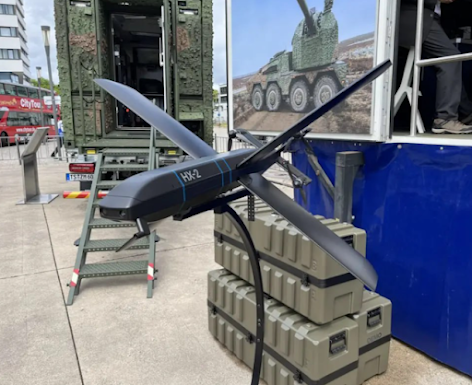 |
| HX-2 |
The German company Helsing is actively promoting its HX-2 attack drones, which are currently being tested by several European armies from Germany to the UK. This was stated by the vice president of the company Simon Brunies. However, not all countries are in a hurry to buy these drones: for example, France is likely to abandon purchases, but Germany may make a decision by the end of 2025.
What is the HX-2?
This is not just a drone, but a real "smart" kamikaze with elements of artificial intelligence, capable of finding targets on its own, even if there is powerful electronic suppression around. It flies fast — up to 220 km/ h, can fly as far as 100 km, weighs about 12 kg, and its combat load allows it to hit both equipment and enemy fortifications.
Currently, the plant in southern Germany produces about 450 HX-2 drones per month, but the company wants to increase this number to 1,000 units per month. And if they launch a second plant, then up to 2,500 units per month. However, this requires training new specialists, and it takes time.
Interest in such drones is growing throughout Europe, as armies increasingly realize that modern warfare is impossible without autonomous systems. Especially after such devices began to show themselves on the battlefield.
Who is already using the HX-2?
- Germany is considering the possibility of purchasing these drones — this could be an important step in modernizing its army.
- Other European countries are still testing the HX-2 to see if it suits them in terms of performance and price.
- Ukraine has already received thousands of such drones, and they are actively used on the front line. According to the Ukrainian military, some of them have already been in real battles.
The artificial intelligence in the drone gives it the ability to deceive air defense systems, act independently and even work in bundles — the so-called "swarms". This makes them much more effective than conventional drones and changes the approach to warfare in general. In other words, the future is already here — and it's flying at 220 km/h straight at the target.
If interest in such technologies continues, it can be expected that in a couple of years, HX-2 type drones will become a standard element of the arsenal of any modern army.
















.jpg)

No comments:
Post a Comment